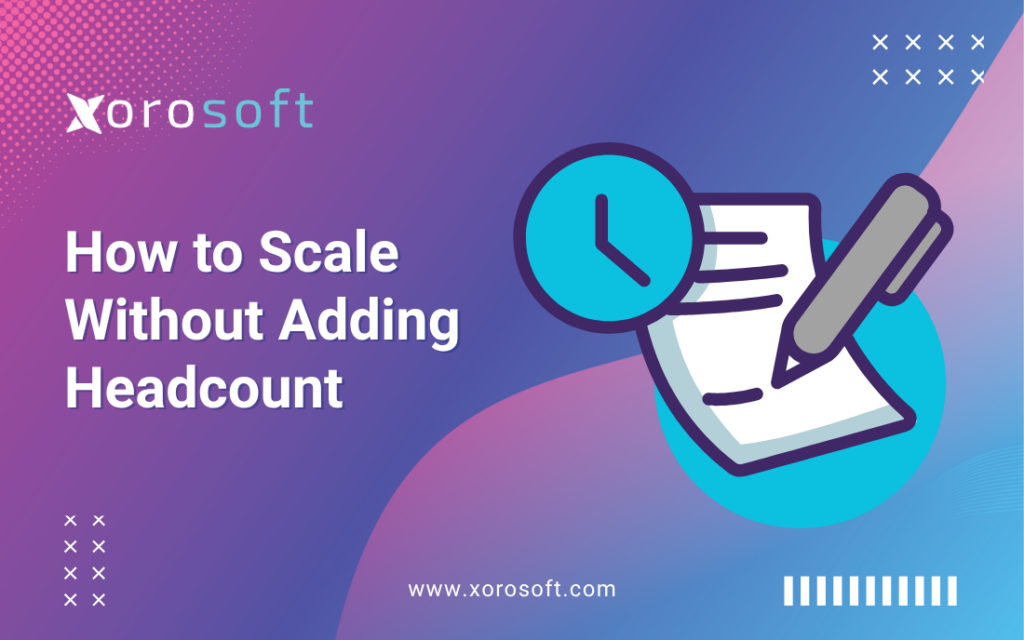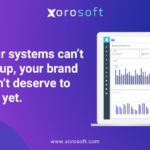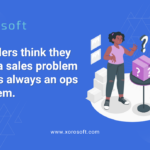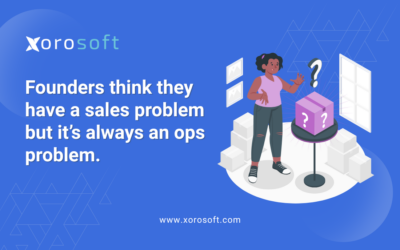
The Smarter Way to Start Scaling Ecommerce Operations
Scaling ecommerce operations shouldn’t mean hiring endlessly just to keep up.
Many DTC and omnichannel founders eventually reach a point where growth starts demanding more people — more operations coordinators, finance staff, and warehouse teams. However, with the right systems in place, you can scale faster without expanding your headcount.
Furthermore, this guide explains how modern brands are scaling ecommerce operations efficiently, staying lean, and focusing on growth instead of daily firefighting.
Why Growth Often Feels Heavy Instead of Scalable
At first, your small team manages Shopify, accounting, and warehouse tasks manually. It feels simple enough. Yet as orders double, complexity rises sharply.
You soon notice delays:
-
Reports arrive late.
-
Inventory mismatches grow.
-
Every new task requires another person.
Consequently, what once worked effortlessly now slows down the business. Instead of focusing on growth, the team starts managing friction.
Moreover, every “quick hire” only hides the real issue — a system that isn’t scaling. True growth requires automation, not additional payroll. Therefore, building operational maturity becomes essential early on.
Additionally, improving workflow design and eliminating manual steps can dramatically change productivity levels. Hence, it’s vital to make scalability a core principle from the start.
What Prevents Ecommerce Operations From Scaling Smoothly
Behind every brand that struggles with scale are invisible process gaps. These typically include:
-
Disconnected tools: Shopify, WMS, and accounting fail to sync.
-
Manual spreadsheets: Reports depend on human updates.
-
Tribal knowledge: Only one person understands each workflow.
-
Delayed visibility: Everyone reacts to yesterday’s data.
As a result, departments operate on conflicting information. Consequently, time is wasted reconciling rather than executing.
In addition, fragmentation slows decision-making, drains energy, and increases costs. To overcome this, businesses must connect systems, automate routine work, and make decisions in real time.
Indeed, when your data is unified, collaboration becomes easier and accountability grows naturally.
Seven Practical Steps to Begin Scaling Ecommerce Operations
The fastest-growing ecommerce brands no longer expand teams for scale. Instead, they rely on automation, unified data, and continuous improvement.
Besides, each of the following steps builds upon the previous one, ensuring a clear roadmap toward efficiency.
1. Centralize Data Across All Channels
Goal: Build one accurate, real-time source of truth.
Action: Connect Shopify, Amazon, and your accounting tools using Xorosoft ERP.
Metric: 99% inventory accuracy and zero manual reconciliations.
When data flows automatically, everyone operates from the same information. Moreover, decisions happen faster, and reporting becomes effortless. Consequently, you eliminate duplication and increase confidence in every number.
Likewise, transparency across teams boosts overall coordination and reduces human error.
2. Automate Repetitive Workflows
Goal: Reduce manual work dramatically.
Action: Automate purchase orders, fulfillment updates, and invoices.
Metric: 80% fewer manual tasks.
As a result, your team gains back valuable hours. Additionally, errors decline, and your staff can concentrate on optimization instead of repetition. Meanwhile, automation improves consistency and accuracy across departments.
Even so, ongoing monitoring ensures that automation continues to align with your changing operations.
3. Simplify Processes Before Scaling Them
Goal: Create smoother end-to-end operations.
Action: Map your entire workflow, remove redundant steps, and standardize approvals.
Metric: 20% faster order cycle time.
Before automating, simplify. Otherwise, you risk automating inefficiency. In addition, simplification empowers your automation to deliver exponential ROI. Ultimately, every streamlined step strengthens scalability.
For example, eliminating unnecessary handoffs can immediately shorten lead times.
4. Enable Real-Time Visibility Across Teams
Goal: Empower faster, smarter decisions.
Action: Use live dashboards within your ERP to track stock, sales, and fulfillment.
Metric: 25% faster replenishment and fewer mistakes.
With instant visibility, every department moves in sync. Furthermore, problems are spotted before they grow costly. Consequently, decision-making becomes proactive rather than reactive.
In other words, live data allows you to plan instead of panic.
5. Measure the Metrics That Actually Scale
Goal: Focus on KPIs that prove scalability.
Action: Track:
-
Pick accuracy
-
Order cycle time
-
Fulfillment cost per order
-
Cash conversion cycle
Metric: Predictable, repeatable growth.
Additionally, these metrics reveal exactly where your operation bottlenecks. Consequently, decisions become data-driven instead of assumption-based. Moreover, tracking consistently builds long-term operational resilience.
Hence, visibility turns into your most powerful optimization tool.
6. Empower People Through Automation
Goal: Multiply team impact without stress.
Action: Train employees to handle automated workflows confidently.
Metric: 2× productivity per team member.
Automation doesn’t replace people; rather, it amplifies their capability. Therefore, your team becomes strategic rather than reactive. In the same way, they learn to solve problems faster and focus on growth initiatives.
Indeed, empowered employees are more innovative and invested in results.
7. Forecast Demand With Confidence
Goal: Anticipate stock levels accurately.
Action: Use predictive forecasting in Xorosoft ERP.
Metric: 95% forecast accuracy and 20% less overstock.
In contrast to manual forecasting, automation uses real sales patterns. As a result, inventory turns faster, and cash flow improves. Moreover, the entire supply chain runs with fewer surprises.
Additionally, forecasting allows you to seize opportunities ahead of competitors, ensuring you never miss demand peaks.
How an Apparel Brand Doubled Output Without Hiring
A fast-growing apparel brand using Shopify and multiple warehouses faced constant reporting delays.
Before Xorosoft ERP:
-
Three staff reconciling orders daily.
-
8% error rate.
-
45-day cash conversion.
After automation:
-
Seamless sync between Shopify, accounting, and fulfillment.
-
1% error rate.
-
27-day cash conversion.
Therefore, scaling ecommerce operations through automation let them grow throughput by 2× — with the same team. In addition, customer satisfaction rose sharply as fulfillment accuracy improved.
Overall, this transformation shows that intelligent systems drive exponential efficiency without increasing labor costs.
Your Five-Day Kickstart Plan
| Day | Focus | Action | Result |
|---|---|---|---|
| Day 1 | Audit | List all manual tasks and bottlenecks. | Full visibility. |
| Day 2 | Connect | Integrate systems and sync data. | One unified view. |
| Day 3 | Automate | Turn on order and invoice workflows. | 80% fewer manual steps. |
| Day 4 | Train | Teach staff to use dashboards. | Smoother adoption. |
| Day 5 | Optimize | Review KPIs and refine process. | Continuous improvement. |
Additionally, review progress weekly to sustain momentum. Meanwhile, celebrate quick wins to build confidence across teams. Besides, reinforcing small improvements ensures momentum never fades.
Common Questions About Automating Ecommerce Operations
Do I need developers to set this up?
No. Cloud tools like Xorosoft ERP integrate instantly with Shopify — setup takes hours, not weeks. Therefore, implementation is quick and non-technical.
Will this replace my existing tools?
No, it enhances them. It connects everything under one view for faster insight. Moreover, it reduces complexity by eliminating duplicate entries.
When will I see ROI?
Usually within 30 days. Consequently, savings start showing almost immediately as manual hours drop and reporting improves. Likewise, faster financial clarity boosts leadership confidence.
Scaling Ecommerce Operations Calmly and Confidently
Scaling shouldn’t feel chaotic. Instead, it can be predictable and empowering.
When brands master scaling ecommerce operations through visibility and automation, they achieve growth without chaos. Moreover, the payoff compounds every month — less stress, more control, and sustainable profit.
Nonetheless, consistent refinement ensures that growth remains stable and scalable.
Ultimately, calm, data-driven operations are your best growth advantage.
Start Scaling Without Expanding Your Team
If you’re ready to centralize and automate, explore Xorosoft ERP.
📈 Ranked #1 for Ease of Use on G2
🛍️ Official Shopify App Listing
Furthermore, you can book a free demo today to see automation in action. Consequently, you’ll experience how streamlined operations make growth effortless.









